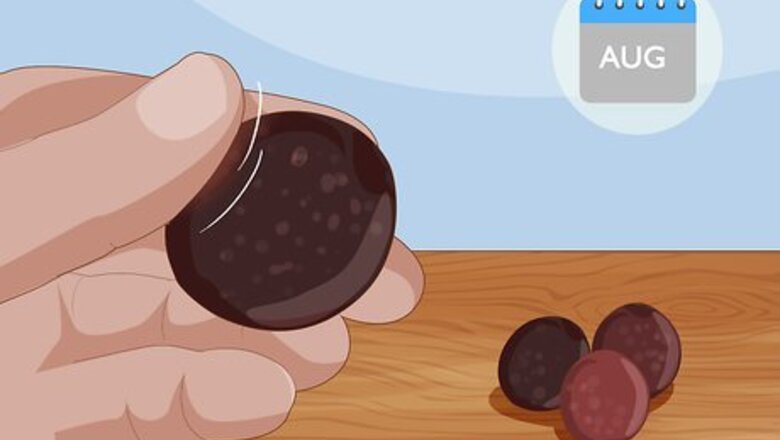
views
Harvesting the Plum Seeds
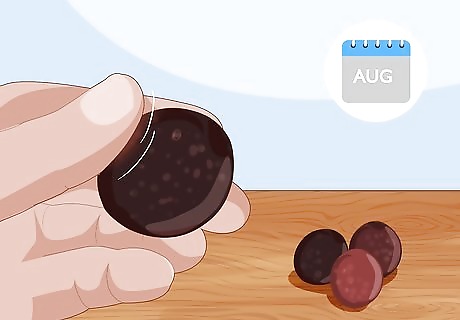
Harvest the seeds in the summer when plums are at their ripest. August is the best month to enjoy plums and remove their seeds. Look for plums that are deep purple and slightly soft to the touch. If the plum is still rock-hard, it isn’t ripe yet. If you want to ripen a plum faster, leave it on the counter next to a banana. The banana produces ethylene, which will speed up the plum’s ripening process.Tip: Use the seeds from at least 3-4 plums for the best chance at a successful plum tree. Sometimes the seeds won’t germinate, so the more you use, the better your chances!
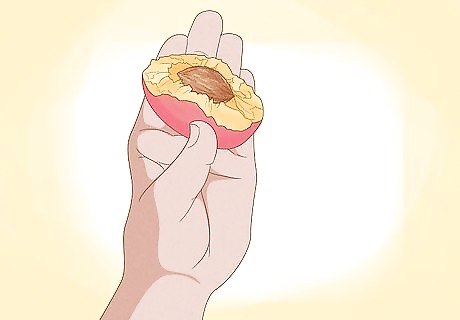
Remove the pits from the centers of the plums. The easiest way to do this is to simply eat the plum! Feel free to cut away the meat of the plum with a knife if you prefer; just make sure that you remove the majority of the plum’s flesh from its center pit. You could also use the plums to make a delicious plum cake if you don’t want to eat them raw.
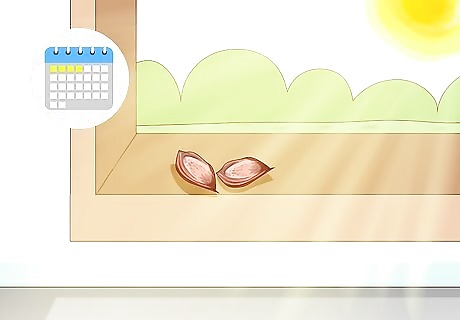
Dry the pits on a sunny windowsill for 3-4 days. A dry pit is much easier to crack than a moist one. Put the pits on a paper towel and set them off to the side somewhere they won’t be disturbed. The sunnier the windowsill, the faster the pits will dry out. You could try to germinate the plum pits without removing the seeds first, but most people have better success when they dry out the pits and harvest the seeds.
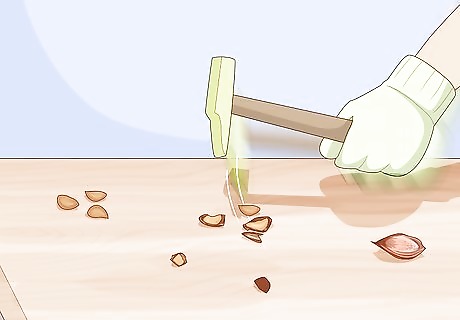
Crack the pits with a small hammer or nutcracker to remove the seeds. Once the pits are dry to the touch, gently tap them with a small hammer or squeeze them with a nutcracker to break them open. Inside each pit will be a small seed shaped like an almond. Remove them from the pits and set them to the side. Go ahead and discard the pits or add them to a compost pile.
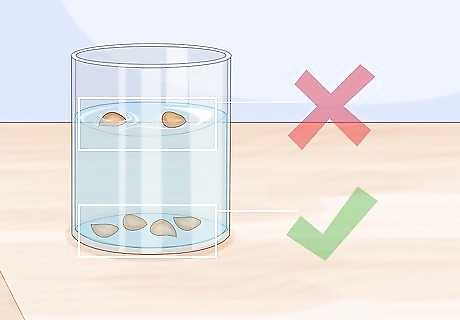
Test the viability of the seeds by dropping them into a glass of water. Use cold tap water to fill the glass. If the seeds sink, they are viable. If they float, they are not and shouldn’t be used. Seeds that sink contain important nutrients that will help them germinate.
Germinating the Seeds
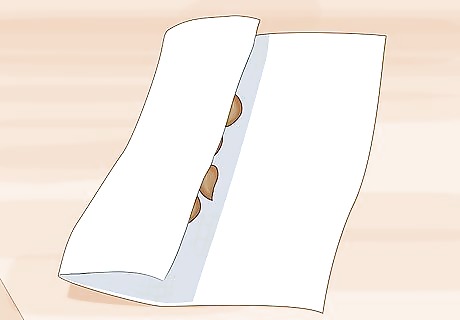
Wrap the seeds in a wet paper towel. After testing the seeds for viability, remove them from the glass of water. Dampen a sheet of paper towel and wring it out so its damp but not soaking wet. Lay it out flat on a counter and fold it in half. Then place the seeds on the bottom half and fold the top half over so they’re completely covered. Using a paper towel to germinate the seeds often produces results much faster than other methods. Instead of waiting a full 12 weeks for roots to sprout, you may start seeing growth after 2 weeks.Try This Instead: If you’d rather, you could also fill small, lidded plastic or glass containers with well-draining soil. Then place one seed in each container, pushing it down about 2 to 3 inches (5.1 to 7.6 cm). Put the lids on the containers and store them in the fridge for 4-12 weeks or until the seeds start to grow roots.
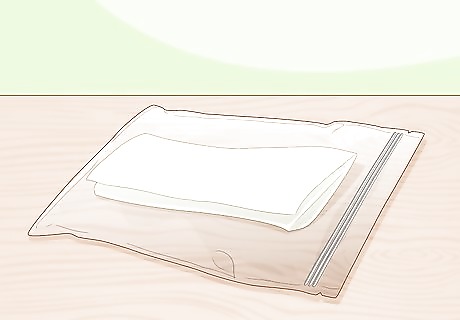
Place the wet paper towel in a resealable plastic bag. Carefully pick up the paper towel and set it inside of a plastic bag. Expel as much excess air from the bag as you can before you close it. Keep the bag flat if you can. This will make it less likely that a seed will slip out from the paper towel.

Store the plastic bag in the refrigerator at 40 °F (4 °C). Check the temperature of your fridge and lower it if it is higher than 40 °F (4 °C). Put the plastic bag somewhere it won’t get squished. Keeping the seeds in the fridge mimics the process that would take place if the plum were to have fallen to the ground after the summer growing season ended. The plum would break open, and the pit would spend several months in the cold winter earth. This process is called stratification and is necessary for the seeds to sprout roots. The seeds need cool stratification to germinate indoors. You can put them in a damp paper towel in the refrigerator. Or, wrap them in damp sphagnum moss and put them into an empty strawberry container for germination.
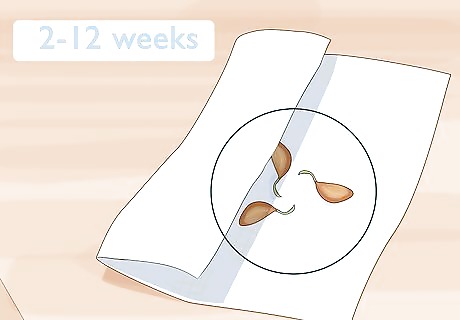
Wait 2-12 weeks for the seeds to grow roots. Depending on the seeds, it could take anywhere from several weeks to several months for roots to appear. Check the seeds every 2 weeks by opening the plastic bag and peeking into the paper towel. Roots will be small and white when they first appear, and they will turn green as they get bigger. Even after the seeds start to root, you can leave them in the fridge. They won’t be ready to be planted or go outside until the springtime. Not every seed will grow roots. If after 12 weeks a seed still doesn’t show any signs of growth, you can throw it out.
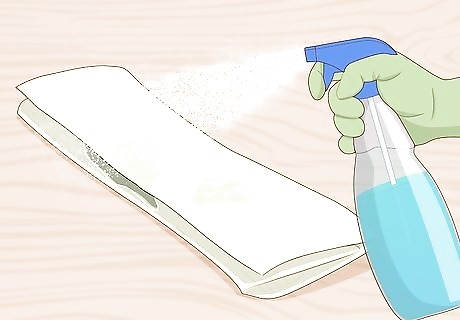
Dampen the paper towel when it gets dry. When you check the seeds for progress, check the paper towel, too. If it is dry to the touch, carefully remove it from the plastic bag and sprinkle it with water so it gets damp again. Reseal it in the bag and place it back in the fridge. Keep doing this until the springtime when you can transfer the seeds to pots. To Change or Not to Change the Paper Towel: If possible, avoid moving the seeds from the original paper towel so you don’t disturb any new growth. If you notice that the paper towel is growing mold, use tweezers to carefully move the seeds from that paper towel to a new, slightly damp one.
Planting the Seedlings
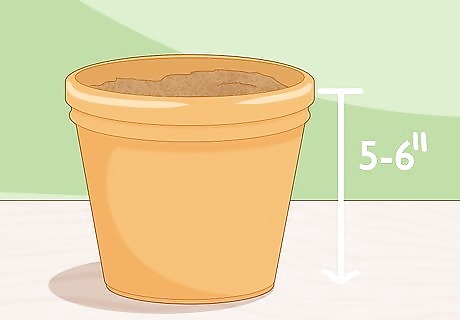
Prep a small container for each seed with 5 to 6 inches (13 to 15 cm) of well-draining soil. You can use a small pot or even plastic cups for your seeds. They don’t need a lot of space at first, so opt for a container with a 4 to 6 in (10 to 15 cm) circumference. This will give each seed enough space to grow for at least 6 months. You can buy well-draining soil at your local home and garden store.Tip: For the best results, use a container with drainage holes in the bottom. If you’re using a plastic cup, poke holes in the bottom with a knife or pen.

Plant the seeds 2 inches (5.1 cm) deep in the soil and water them thoroughly. Make a small hole in the center of each container with your finger. Drop a seed into the hole, and then cover it up with soil. Water the soil until it is damp to the touch. If you’re concerned about excess water coming out of the bottom of the containers, set them on a drainage plate.
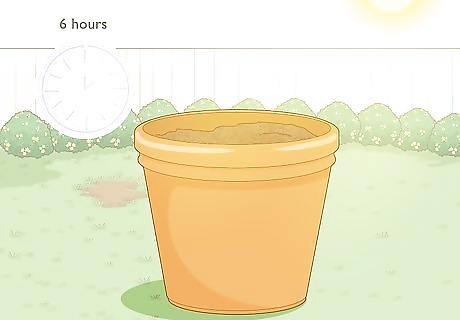
Put the containers somewhere they’ll receive 6 hours of sun every day. If the last frost has passed, you could put the containers outdoors and then move them back inside when frost returns in the fall. If you live in a cooler climate, keep the containers in a sheltered area, like a garage or shed, and use a plant light to ensure they get enough sun each day. More than 6 hours of sun a day is perfectly fine. They just need that at a minimum to thrive.
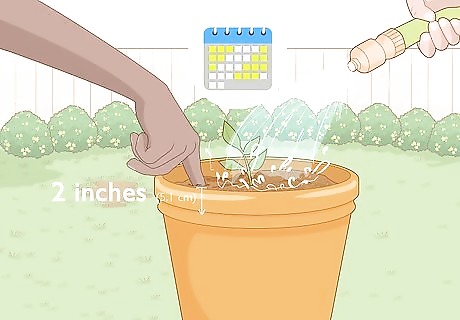
Water the soil when the top 2 inches (5.1 cm) are dry to the touch. If the containers are outside, rainwater should be enough for the seeds unless there is a dry spell of more than 5 days. If the plants are indoors, check them every 2-3 days to see if they need more water or not. Over the weeks, you should see new green growth break through the soil. Plum trees are pretty hardy, so other than giving them water and sun, there isn’t too much else you have to do other than be patient.
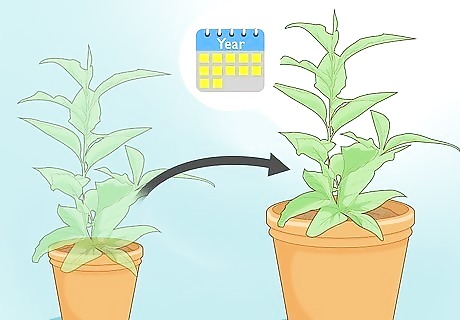
Transplant the seeds to a bigger pot every 6-12 months. Once the tree has begun to grow, you’ll want to replant it in a new container whenever the spread of its leaves outstretches the perimeter of its current container. If you decide to move your tree outdoors, plant it in the spring 1 ft (12 in) down in the soil. Most plum trees will start producing fruit after 3-5 years.

Fertilize the trees once a year to encourage their growth. Use a low-nitrogen fertilizer with a 1-1-1 ratio of nitrogen to phosphorus to potassium. Apply the fertilizer in the fall after the first frost so the trees can absorb the nutrients before they go dormant for the winter. Always wear gloves when working with fertilizer and follow the directions to mix and disperse it properly. Some fertilizers need to be diluted with water and sprayed around the roots of the trees, while others get sprinkled over the ground dry.
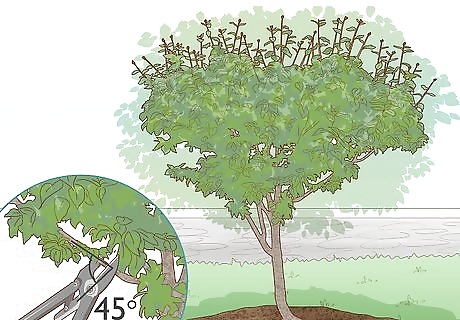
Prune the trees in the summer to help them produce more fruit. Use sharp, clean pruning shears to remove any dead, diseased, or dying branches. Cut them off at a 45-degree angle where they intersect with the trunk. In general, avoid cutting away any branches until they’re at least 3 years old unless they are obviously diseased or dead.


















Comments
0 comment